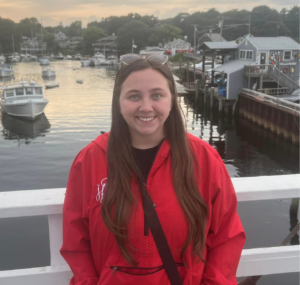Current Members
Principal Investigator
| Walter Chazin, Ph.D. |

Biography
Dr. Chazin received a B.Sc. in chemistry from McGill University in 1975 and a Ph.D. in chemistry from Concordia University in Montreal in 1983. He was a postdoctoral fellow in the lab of Kurt Wüthrich at the E.T.H. in Switzerland (2002 Nobel laureate in Chemistry). After 13 years on faculty in the Department of Molecular Biology at the Scripps Research Institute, he moved to Vanderbilt in 1999 where he holds the Chancellor’s Chair in Medicine as Professor in the Departments of Biochemistry and Chemistry, and serves as Director of the Center for Structural Biology and the Molecular Biophysics Training Program. He has mentored ~100 graduate students and postdocs and ~30 undergraduate students in his 29 years as an independent investigator. He has published over 200 peer reviewed papers and 50 book chapters and reviews, and serves on a number of advisory committees and editorial boards. His honors include American Cancer Society Junior Faculty and Faculty Research Awards, serving as a National Academy of Science International Travel Fellow and NAS Teaching Fellow, Regents Visiting Professor at the University of Naples in Italy, and appointments as a Fellow of the American Association for the Advancement of Science and Fellow of the Biophysical Society.
Research Philosophy
This means that although we focus on the medicine and biology, our problems sometimes require developing unique solutions. NMR remains the core approach, used mostly as a tool for characterization of structural interfaces and dynamics. X-ray crystallography is the method of choice for structure determination. Scattering provides the unique ability to study complex proteins and protein complexes, and we are rapidly adapting to the ‘electron microscopy revolution’ for these systems. With powerful structural information in hand, we are equipped to tackle in vitro and cell-based biochemistry and provide critical insights into the fundamental biology and medicine that drives our research.
Dr. Chazin’s Philosophy and Approach
Research Assistant Professor
Elwood Mullins, Ph.D.
 |
Replicative DNA synthesis is initiated by the de novo synthesis of short RNA-DNA primers. In eukaryotes, these chimeric primers are generated through the dual enzymatic activities of the DNA polymerase α–primase (polα–primase) complex. The mechanism by which polα–primase synthesizes RNA-DNA primers of defined length and composition, necessary for replication fidelity and genome stability, has long remained unknown. My project seeks to fill this gap in knowledge by combining complementary biochemical, biophysical, and structural (cryo-EM and X-ray crystallography) techniques to achieve a comprehensive mechanistic understanding of primer synthesis by polα–primase.
Email: elwood.mullins@vanderbilt.edu |
Research Instructor
Areetha D’Souza, Ph.D.
 |
Nucleotide excision repair (NER) is an essential DNA repair pathway responsible for the removal of bulky DNA lesions and it functions through the concerted assembly and action of more than 20 proteins at the site of damage. My project focuses on understanding the scaffolding role of two proteins in the NER pathway -XPA and RPA using integrative structural biology techniques.
Email: Areetha.d.souza@vanderbilt.edu |
Research Assistants
Anthony Ornelas
 |
I purify proteins involved in genome maintenance.
Email: anthony.g.ornelas@vanderbilt.edu |
James Dethero-London
 |
I purify proteins involved in host immunity and DNA repair for the Chazin lab as well as collaborators. I also assist with the lab’s research projects and am currently working on a project funded by Bayer. Additionally, I maintain the FPLC’s and train new members to use them.
Email: james.dethero-london@vanderbilt.edu |
Chrissy Lynch
 |
As a new member of the lab, I am actively learning and developing the essential skills and techniques for protein purification. Much of the lab’s research focuses on nucleotide excision repair (NER), particularly on two key proteins in the pathway: RPA and XPA. My current work involves purifying various RPA constructs and optimizing established protocols for greater efficiency. This work is crucial for understanding how RPA contributes to NER, with potential implications for improving our understanding of DNA repair mechanisms. I’m gaining experience with techniques like chromatography and affinity purification, while refining protocols to enhance protein yield and purity.
Email: christine.m.lynch@vanderbilt.edu |
Senior Staff Scientists
Suhas Kharat, Ph.D.
 |
Nucleotide excision repair (NER) is crucial DNA repair mechanism to remove bulky DNA lesions generated due to chemical mutagens and UV exposure. Mutations in genes associated with NER pathway causes xeroderma pigmentosa but also have been correlated with enhancement of sensitivity towards antitumor drugs such as cisplatin. XPA is one of the NER associated genes that interacts with DNA and nearly all core members of NER pathway. Missense mutations in XPA can sensitize cancer cells to cisplatin treatment. My goal is to determine functional effect of XPA mutations on NER capacity and sensitivity to antitumor drugs.
Email: suhas.s.kharat@vanderbilt.edu |
Senior Scientist
Rachel Service, Ph.D.
 |
I have a varied biochemical, biophysical background characterizing a wide array of proteins including, but not limited to, photosynthetic membrane, amyloid, designer proteins, DNA replication, and S100. My primary tasks are maintaining our large library of S100 variants while managing the Chazin lab.
Email: rachel.service@vanderbilt.edu |
Postdoctoral Fellows
Hannah Daniels, Ph.D.
 |
My work stems from our lab’s finding that patients with impaired NER have an increased response to Pt-based chemotherapeutics. Therefore, I am focused on developing inhibitors that can disrupt NER in order to increase sensitivity to Pt-based agents. Specifically, I am aiming to inhibit the binding between two critical NER proteins; XPA and RPA. Mutations within the binding interface between these proteins has been shown to severely impair NER, making this area a good target for inhibitor development.
Email: hannah.daniels@vanderbilt.edu |
Indu Bhatia, Ph.D.
 |
The host immune responses and functions against bacterial infections by restricting the availability of essential metals such as zinc (Zn) in a process known as ‘nutritional immunity’. However, despite these host strategies, the ability of S. aureus to cause disease suggests that there exist mechanisms to bypass this process. My research is focused to structurally characterize Zn metallochaperone of S. aureus. To achieve this objective, I am employing various biochemical and biophysical techniques including X-ray crystallography as well as in silico tools to bring mechanistic insights on their potential to transfer Zn ions to its client protein.
Email: indu.bhatia@vanderbilt.edu |
Nicholas Kaley, Ph.D.
 |
DNA polymerase alpha primase structure characterization.
Email: nicholas.kaley@vanderbilt.edu |
Graduate Students
Joshua Huang
 |
Structural characterization of Rad51 and RADX in DNA repair.
Email: joshua.huang@vanderbilt.edu |
Patrick Ginther
 |
The Receptor for Advanced Glycation End-products (RAGE) is a member of the immunoglobulin superfamily. RAGE recognizes various activators including Advanced Glycation End-products (AGEs), S100 proteins, and HMGB1. Upon activation, RAGE propagates signals through the plasma membrane and can trigger pro-inflammatory responses, oxidative stress, and aging. Dysregulation of RAGE is implicated in numerous diseased states, including diabetic nephropathy and retinopathy, neurodegenerative disorders, cardiovascular diseases, and cancer. As a potential therapeutic target for the treatment of these diseases, my project seeks to identify and develop tight binding small molecules capable of inhibiting the interaction between RAGE and its various ligands using a fragment-based drug discovery approach.
Email: patrick.s.ginther@vanderbilt.edu |
Undergraduate Students
Tammy Le
 |
RAGE is a transmembrane receptor signaled by various ligands, setting off a series of signaling pathways that queue inflammatory responses. These inflammatory responses are implicit in different disease states such as cancer, diabetes, and neurodegenerative disorders. My project focuses on the development of inhibitors that block signaling between the ligand and target protein. I am using a virtual, fragment-based discovery approach to carry out this process. In my free time, I enjoy baking, photography, and crafting.
Email: tammy.t.le@vanderbilt.edu |